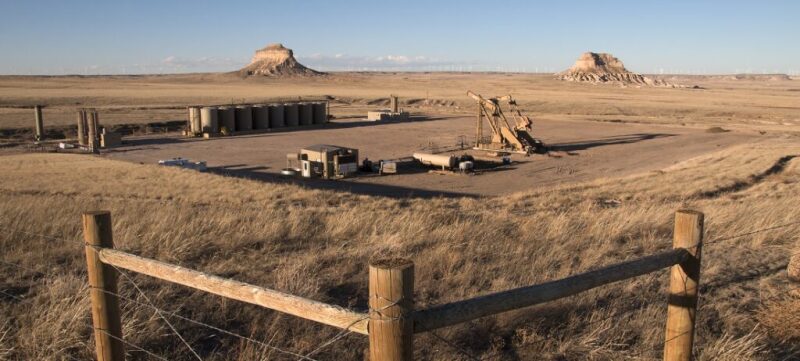Methane (CH4), the primary constituent of natural gas and is the second-most abundant greenhouse gas after carbon dioxide (CO2), accounts for 16% of global emissions. The lifetime of methane in the atmosphere is much shorter than CO2, but CH4 is more efficient at trapping radiation than CO2. Pound for pound, the comparative effect of CH4 is more than 25 times greater than CO2 over a 100-year period. Natural-gas emissions from oil and gas facilities such as well sites, refineries, and compressor stations can have significant safety, economic, and regulatory effects. Because of the remote location of many of these facilities, gas emissions can continue for extended periods of time. Continuous emission detection systems enable rapid identification and response to unintended emission events. Existing technologies such as infrared cameras and laser technologies, however, are cost-prohibitive and are difficult to install in a high number of disparate sites. These technologies generally are more applicable for periodic manual monitoring as part of leak detection and repair programs. Such periodic monitoring does not provide quick detection of “fat tail” emissions that are a substantial component of emissions from oilfield facilities including well sites and gathering and boosting stations.
Ubiquitous sensing networks (USNs) enabled by a wireless sensor network (WSN) for real-time monitoring of methane emissions recently received special attention. These networks provide flexibility to arrange the sensors arbitrarily and transmit data at an extended distance without any wired connections. USN and WSN networks also are scalable to a larger number of sensing points that can be used to integrate various assets at the same time. More-informed decision-making, timely problem-solving, and improved efficiency are among the advantages of these networks as part of rising interest in sustainable oilfield operations. Emission reduction targets and a good understanding of the emission footprint at the equipment and facility levels would enable operators to make more informed decisions on mitigation efforts, especially in unfrequented remote locations. Advantages of USNs are scalability through mesh networking, real-time location awareness, remote configurability, and the ability to be relocated without manual configuration.
This paper presents a USN technology that has been developed, tested, and piloted at several oil and gas facilities (well sites and compressor stations) as well as at an in-house simulated well site. The system integrates wireless methane sensor nodes, weather sensors, and other edge devices powered by batteries and solar panels for quick installation and autonomous operation. The sensing technology possesses self-correction for temperature and relative humidity, while also rejecting chemical interferences through a multivariable electromagnetic sensor. The sensor nodes detect methane gas and perform real-time analysis of gas concentration on the basis of multivariable algorithms to detect gases accurately in the presence of numerous chemical interferences. Measured data is transferred through a cloud-based network to a remote server equipped with a user interface capable of handling and analyzing data and rendering capabilities for various formats. The technology incorporates machine-learning methodologies to correct performance of individual sensors against environmental effects and to analyze dynamic data collectively from the sensor network to locate and quantify gas emissions within the surveillance area.

